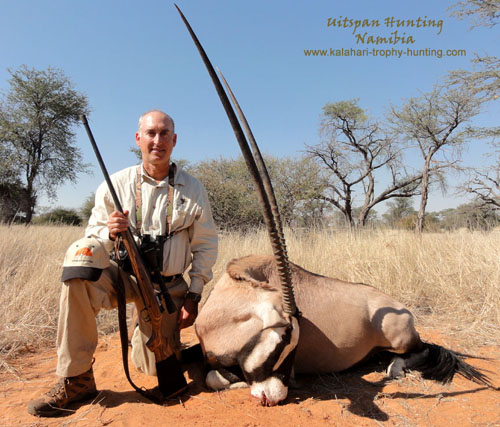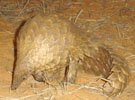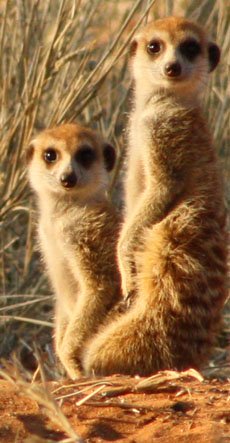For more information about our hunting safaris, don’t hesitate to reach out and contact us!
Kalahari Gemsbok Video
Make sure to read detailed information on the Kalahari Gemsbok. All their special qualities, ways of survival in extreme heat and dry conditions and much more, are described.
These mammals are probably, compared to other species, the best adapted to the harsh environment of the Kalahari and Namib deserts in Namibia.
See below on the video, in slower motion, how Gemsbok bulls fight.
Interesting Gemsbok Statistics...
- Size
- Males have an average shoulder height of 1,2m (47.2") and weight approximately 240kg (530lb).
- Females are about 1.1m (43.3") at shoulder height with a mass of 210kg (463lb).
- 264 days (± 9 months). Single calfs are born at any time of the year with birth peaks in the southern Kalahari during August and September. The calf hides and will move with the mother at night to a new resting-place. Calves are usually 3-6 weeks old before they join the herd.
- Open, arid areas, such as open grassland, Kalahari dune land and bush savanna.
- 18 to 19 years
- The Nr.1 Gemsbok Trophy of Namibia was hunted in the Kalahari in April 2004. It had a total score of 281.7cm (SCI) and was the first to measure 50"!
(See below Uitspan's own record Gemsbok... it measured 47")
Most like... - The Roan Antelope, which also has black and white facial markings, but the gemsbok is somewhat smaller, with straight, rapier-like horns.
- Kalahari Gemsbok Park, Namib Desert, Kalahari region.
Found in...
Meaning of "Uitspan"
'Uitspan' is an Afrikaans word that means place of rest.
When the Boer settlers moved inland in Southern Africa in the 1800's, they used ox carts. When they found a spot with game, water and green grass, they arranged their ox carts into a circular laager for protection against wild animals and stopped for a rest.
They referred to such an action of relaxation for man and beast, as Uitspan.
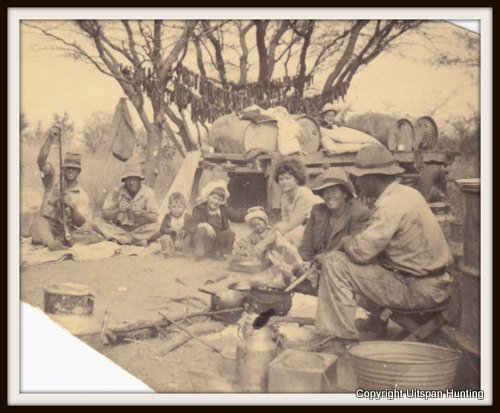
(Picture above of our ancestors.)
Did you know?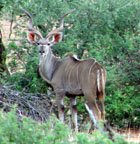 Greater Southern Kudus are famous for their ability to jump high fences. A 2 m (6.56 ft) fence is easily jumped while a 3 m (9.84 ft) high fence is jumped spontaneously. These strong jumpers are known to jump up to 3.5 m (11.48 ft) under stress. |
Did you know? Some animals have one sense more than man!The flehmen response is a particular type of curling of the upper lip in ungulates, felids and many other mammals. This action facilitates the transfer of pheromones and other scents into the vomeronasal organ, also called the Jacobson's Organ. Some animals have one sense more than man!The flehmen response is a particular type of curling of the upper lip in ungulates, felids and many other mammals. This action facilitates the transfer of pheromones and other scents into the vomeronasal organ, also called the Jacobson's Organ.This behavior allows animals to detect scents (for example from urine) of other members of their species or clues to the presence of prey. Flehming allows the animals to determine several factors, including the presence or absence of estrus, the physiological state of the animal, and how long ago the animal passed by. This particular response is recognizable in males when smelling the urine of a females in heat. |
